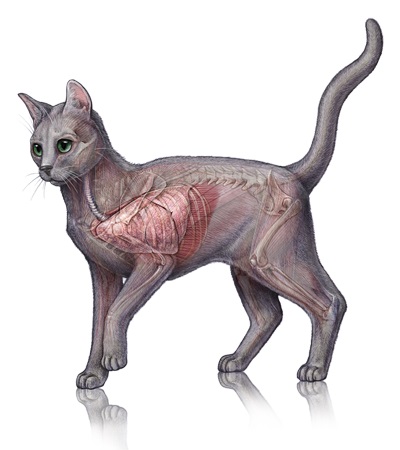Respiratory

Respiratory system is one of the most important systems in the body. It is responsible for the gaseous exchange. Oxygen is inhaled and entered the blood stream and the carbon dioxide, being a metabolic waste is exhaled out of body. Respiratory system is divided into two parts: the upper airways and the lower airways. The upper airway begins from the nose and mouth. The air travels from the nasal passage to the lungs through trachea. The lungs are the lower part of respiratory system. Lungs play the most important part in inhalation of oxygen and exhalation of carbon dioxide.
Disorder can be present in upper or lower airways. In some cases, both of the airways may be affected. If there is any disturbance in the normal functioning of respiratory tract, the following signs are most commonly seen.
- Coughing
- Noisy breathing
- Getting tired easily after exercise
- Abnormal breathing pattern
- Difficulty in breathing
- Change in voice
- Sneezing
- Nasal discharge
The most common disorders of the respiratory tract are following.
- Lung cancer
- Pneumonia (inflammation of the lungs)
- Bronchitis (inflammation of the airways)
- Infections due to bacteria or protozoans
- Obstruction of the airflow due to tracheal collapse, tumors, laryngeal collapse
Physical examination of the animal can help locate the position of the abnormality.
